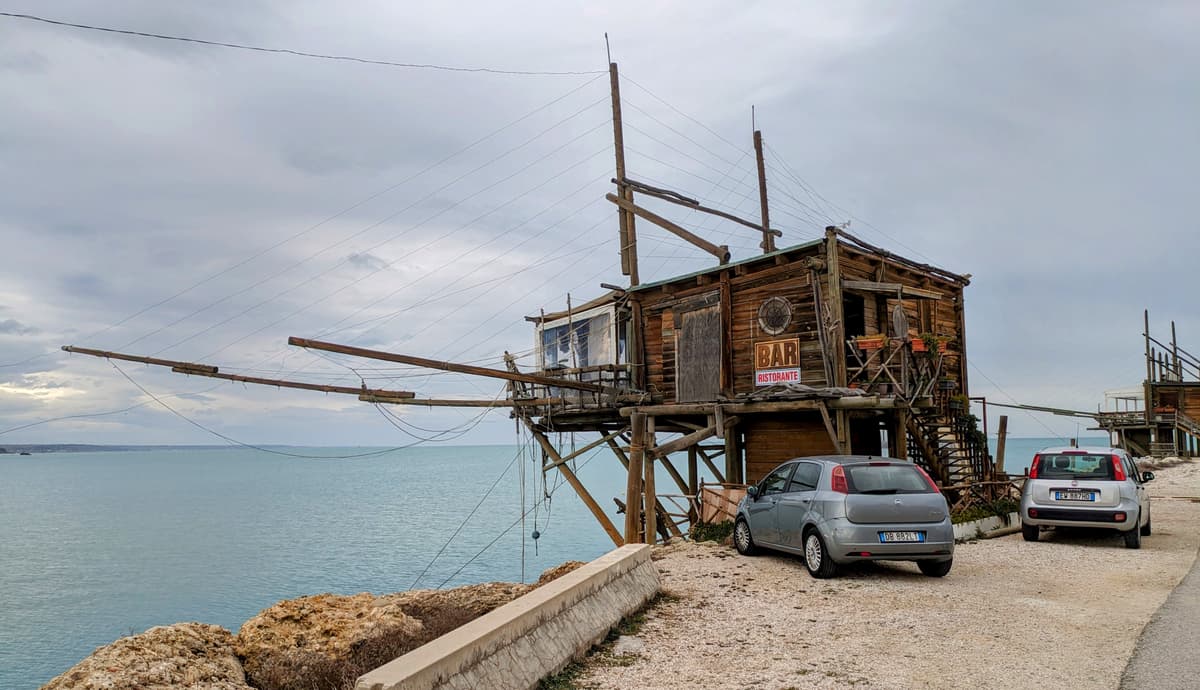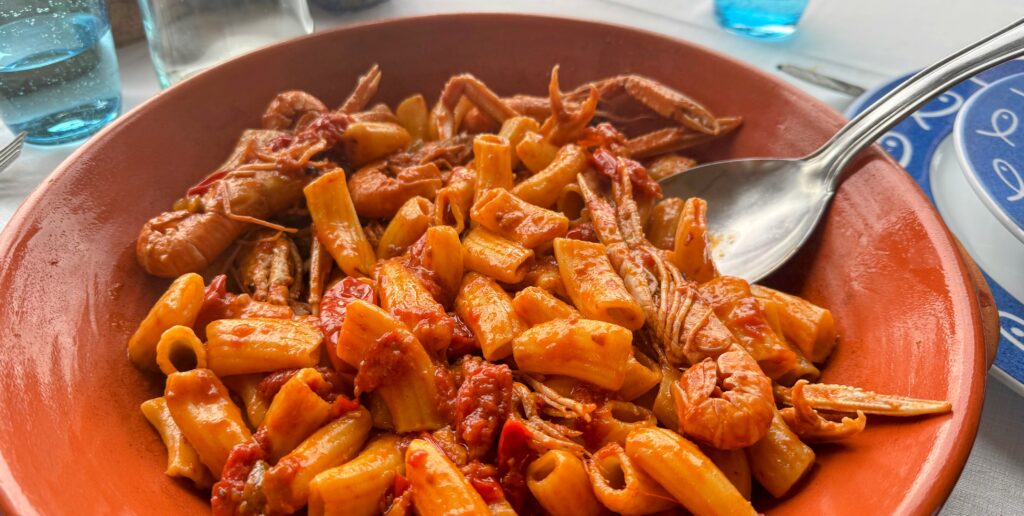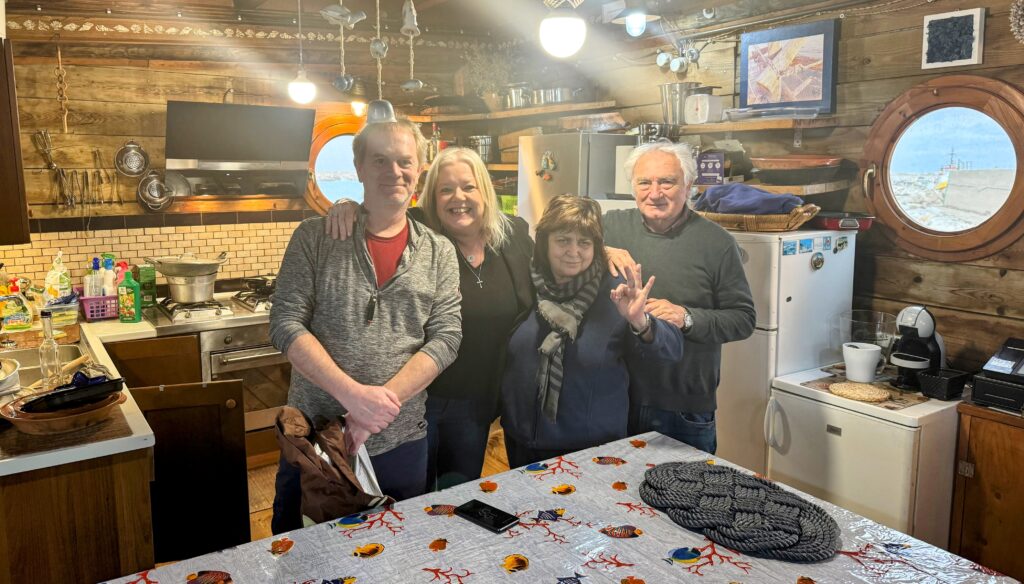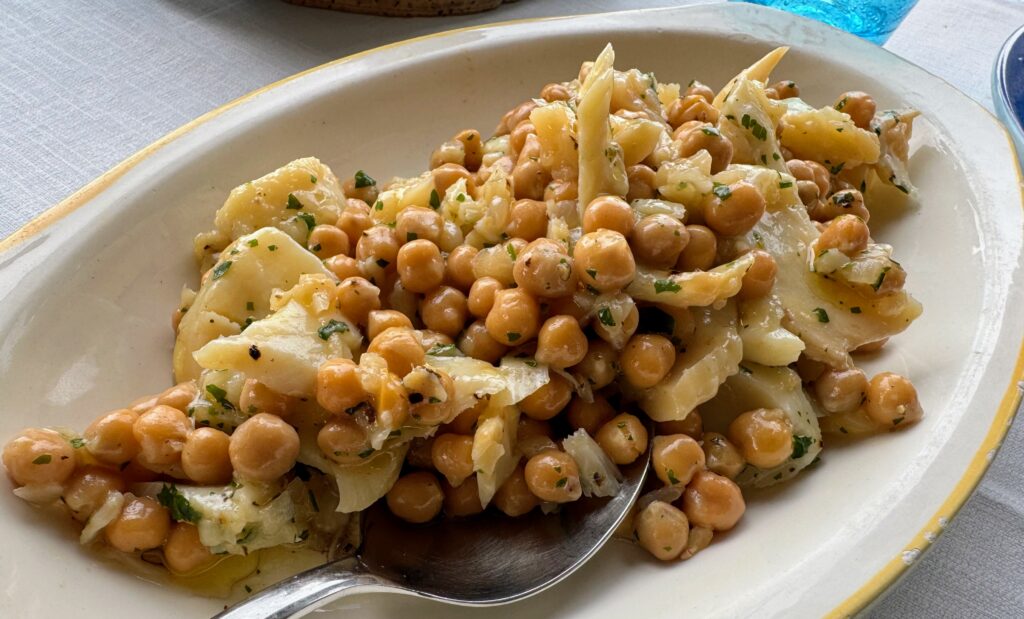On Italy’s Adriatic Coast, a Magical Meal Fit for a Roman Patrician
Along the Trabocchi Coast, dozens of traditional fishing huts have been converted to restaurants.

Magical meals come along only so often in life. They require a near-perfect combination of setting, company, cuisine, and service. Usually, even if everything else aligns perfectly, one of those is somehow off. The server might be having a bad night. The post-meal espresso might reach the table just a tad on the cool side. Maybe one of the diners had a little too much to drink. Any number of things can go wrong, and at least one usually does.
Personally, I’ve only had a handful of these perfect meals. As a teenager, my first haute-cuisine experience at the now defunct Le Francais at Wheeling, Illinois in the 1980s was one. Another was with my young family at a nondescript roadside restaurant at Normandy one summer afternoon in the early 2000s. Two more that come to mind were at the Blackberry Farm at Walland, Tennessee and one at a churrascaría outside Sao Paulo, Brazil.
Now, I have another to add to the list. On a recent, off-season sojourn along Italy’s Adriatic coast, my wife, grown son and I lucked upon one of the few traditional trabocchi fishing huts that stays open during the winter months — the Trabocco Trimalcione just outside the medieval hamlet of Vasto in the state of Abruzzo.

All along this so-called Trabocchi Coast, a 43-mile stretch between San Salvo and Ortona, dozens of the huts have been converted to restaurants. Most are little more than 20-foot by 20-foot square huts on stilts with pine beams reaching out over the water that would have been connected by nets that were dipped into the water to snag passing fish when they were still used for their original purpose.
To say that the Trimalcione offers up the perfect dining experience for seafood lovers is no exaggeration. A covered deck off the back of the hut has room for just three, four-top tables. Glass panels in the floor gives one the sensation of being suspended above the clear, turquoise waters of the Adriatic. On one side of the restaurant is a view of the public Punta Penna beach with the snow-capped Apennines in the background; on the other is the grimey Port of Vasto, with small cargo vessels crammed into harbor the size of a couple football fields.
The proprietor of the Trimalcione, Mario, and his cook, Emilia, are a two-person operation. Reservations are required, and the menu is whatever they feel like cooking that day based on what’s available. On that fateful Saturday afternoon in early February, we spent three hours enjoying some of the finest maritime cuisine Italy has to offer washed down with a never-ending flow of fruity Montepulciano d’Abruzzo red wine.

On arrival, Mario and his friendly spaniel met us at the entrance to the hut, leading us through the kitchen in which Emilia would work her magic to a table tastefully adorned with a white tablecloth and local ceramic plates. In the middle of the table was a centerpiece with half a lemon adorned with marinated artichoke hearts and tuna-stuffed peppers impaled on toothpicks. Within minutes, only the lemon wedge remained.
From there, the hits just kept on coming.
The beauty of Mario and Emilia’s cuisine is its simplicity. Olive oil from Mario’s own groves, lemon, garlic and parsley are the primary ingredients. Fresh tomatoes, homemade pasta and all manner of seafood that was likely swimming a day earlier round out the repertoire.
Mario and Emilia let the food do the talking instead of trying to overplay their hand. There’s no fancy sauces splayed out Jackson Pollock style on oversized white china or shrimp arranged as if they were figures in a Caravaggio painting. Just simple platters of amazing fare presented humbly on earthenware platters — jumbo shrimp sauteed in garlic and butter, tuna carpaccio drizzled with olive oil and lemon juice served on a bed of ripe tomatoes and red onions, langoustines in tomato sauce with fresh pasta, a cold salad of fresh cod and chickpeas, and sea bass grilled to perfection with just a hint of lemon.
We (or perhaps more accurately, my 29-year-old son), ate every scrap that was put before us, a feat that led Mario to arch his eyebrows, smile, and nod with an approving, “Grazie.”

When we finished the tiramisu and shots of scalding espresso, Mario offered to drive us back to the car we had left a couple hundred yards away in the parking lot at the entrance to the port. We opted, however, to walk to the end of the promenade to try and put a dent in the thousands of calories consumed during the previous three hours. It would take more than a few leisurely strolls to come even close, though. The cost of the eight-course experience was not insignificant — 75 euros a head — but memorable meals rarely come cheap.

